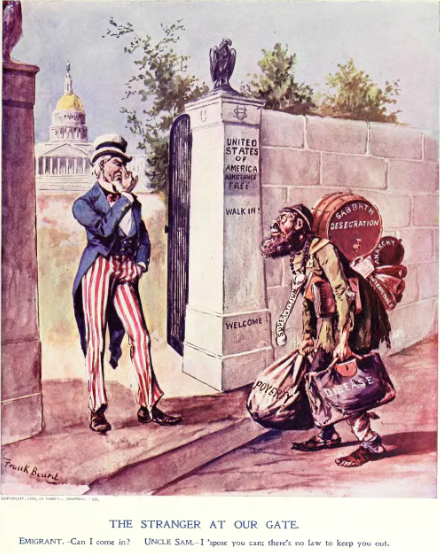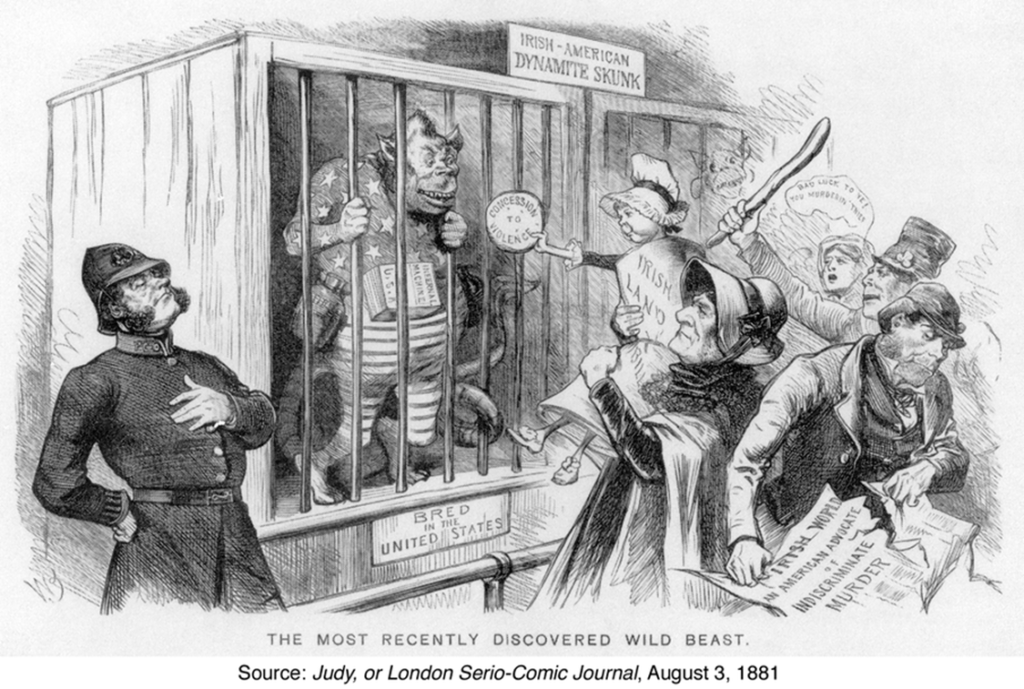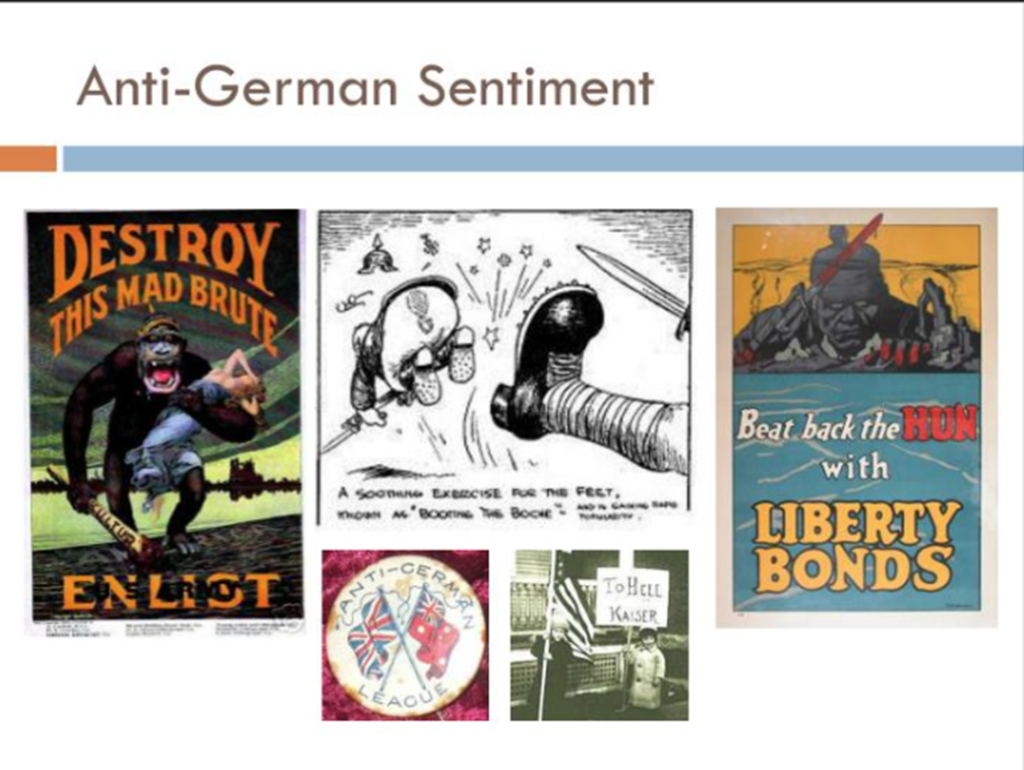Part 1 of a 3-Part Series

Former President Trump and running mate J.D. Vance regularly speak harshly about “illegal aliens” and contend they are destroying the country. Trump has been at this behavior for a long time. In 2015, he launched his presidential campaign by decrying Mexican migrants as rapists who brought drugs and crime, assuming that some were good people.
Let’s remind ourselves of how Trump and Vance describe “Illegals” and the threats they pose:
- They are “poisoning the blood of our country”
- They are “animals” and “not human”
- They escaped from prisons and asylums in their home countries, also bringing disease; in fact, Latin American countries are intentionally sending us their criminals
- They triggered a “migrant crime wave” in the US, including, especially, a spike violent crime
- They are smuggling drugs, especially fentanyl, resulting in tens of thousands of American deaths every year
- They are taking away millions of jobs from Americans, including “Black and Latino jobs”
- They are competing for scarce homes, and driving up prices, resulting in millions of Americans being denied homeownership
- They are eating the cats, dogs and family pets of Americans
- They are being signed up to vote and voting in federal and state elections, despite prohibitions
- They are costing government hundreds of billions of dollars in subsidies and social services that should be going to citizens
Further, Trump and Vance blame the Biden/Harris Administration for allowing this “invasion” to occur, along with all the terrible harms. Biden revoked Trump’s executive actions and ruined a perfectly secure border. The resulting “open borders” policy has been a disaster. Trump recently said, “Kamala Harris has allowed 21 million illegals to pour in from all over the world.” At the Vice-Presidential debate, Vance put the number at 20-25 million.
Finally, Trump’s enmity towards migrants extends to those of the legal variety. In January 2018, he rejected a bipartisan immigration deal, questioning why the U.S. would accept more immigrants from Haiti and “shithole countries” in Africa, rather than countries like Norway.
The sharp increase in border encounters since 2021 and the onslaught of blame heaped on migrants has moved the needle on public opinion. The public is not only concerned about undocumented immigration, but also legal immigration. For the first time since 2001, more than half of Americans (55%) believe legal immigration should be decreased, according to a Gallup poll. The surge in this sentiment since 2020 is remarkable, as you can see from the graph below.

Even more telling, a recent Scripps News/Ipsos poll reveals that 54% of Americans now support mass deportations. This includes 86% of Republicans, 58% of independents, and 25% of Democrats supporting mass deportations. A recent Pew Research poll confirms this finding, showing 56% of registered voters strongly or somewhat support mass deportations. Finally, a recent Syracuse University/Ipsos American Identity poll finds that 42% of Americans view undocumented immigrants as a major threat to the American democratic system and rule of law.
These big shifts in public opinion merit an analysis. Why are Americans now so circumspect about immigration, and especially undocumented immigration? Less than a decade ago, strong majorities of Americans favored a pathway to citizenship for the undocumented. While we also supported stronger border security, we opposed mass deportations.
We’ll explore these and other questions in this 3-Part series. In Part 1 we’ll examine the history of nativism in American politics. We’ll review how various immigrant nationalities were targeted and demonized. The mistakes of the past provide us guidance on how we should proceed going forward. In Part 2 we’ll explore why it’s timely and appropriate to consider decreasing legal immigration and further cracking down on illegal immigration. We’ll identify and distinguish reasons for acting that are legitimate and reasonable versus reasons that are invalid. This review will help us in our analysis of the current situation, which we’ll turn to in Part 3. In the final article we’ll return to the case laid out by Trump, Vance, Republicans and others. We’ll examine whether their narratives are justified and backed by evidence, including how we should proceed if we find that they aren’t.
Let’s start our exploration of nativism in American politics by reviewing how the Irish were targeted and demonized.
The ideology of nativism—where immigrants are opposed, and native inhabitants are favored—has been part of American politics since before we even became a country. Without attempting to be chronological or exhaustive, let’s look at some of this history.
We’ll start with the Irish, and below are a couple of images. The first is Thomas Nast’s political cartoon showing a drunken Irishman atop a barrel of gunpowder while lighting a powder keg and swinging a bottle.

And here’s a political cartoon of a caged Irishman who is pictured and labeled as a wild beast.

Native-born Americans condemned Irish immigrants for their poverty and bad manners, their laziness and lack of discipline, their public drunkenness, their Catholic religion, and their tendencies for criminality and violence. As you can see, the Irish were depicted as wild, grotesque, and beast-like. States adopted laws restricting their immigration. They were discriminated against in employment (“Irish need not apply”) and marginalized by protestants. Later, Irish immigration (and immigration in general) was heavily curtailed by the Emergency Quota Act of 1921. Total immigration from all countries was capped at 357,000; and the Immigration Act of 1924 lowered this total cap to 150,000).
At various times in our history, German immigrants were targeted as undesirable and blamed for many problems.
Benjamin Franklin was one of the first of American politicians to call attention to the threat of German migrants:
“Why should Pennsylvania, founded by the English, become a colony of aliens, who will shortly be so numerous as to Germanize us instead of us Anglifying them, and will never adopt our language or customs, any more than they can acquire our complexion”
The Emergency Quota Act of 1921 and Immigration Act of 1924, heavily curtailed German immigration. Germany’s quota was cut in half. Woodrow Wilson maintained that Germans could not assimilate, that they were uneducated, and they didn’t speak English. During World War I and II, Germans were seen as potential spies and more loyal to their home country than the US. They were castigated as “Huns” and “Krauts.”
Below are some images depicting anti-German sentiment:

Italian immigrants were also targeted as undesirable and problematic.
Anti-Italian sentiment developed in conjunction with the large-scale immigration of Italians to the US. More than 4 million Italians came to the US during the late 19th and early 20th centuries. The Italians arrived in waves, many of them from agrarian backgrounds. Nearly all were Catholic, as opposed to the then Protestant majority. Overall, they lacked formal education and competed with previous immigrants for lower-paying jobs and housing.
Italians were blamed for taking American jobs. At the same time, the press began advancing pseudo-science findings that “Mediterranean” types were inherently inferior to northern Europeans. In drawings and songs, Italians were caricatured as criminal (the Mafia) or subhuman. The political cartoon below depicts Italians arriving from the slums, bringing crime, filth, and disease. The Emergency Quota Act of 1921 and Immigration Act of 1924, heavily curtailed Italian immigration.

Chinese immigrants were targeted as undesirable and problematic beginning in the mid-19th century.
Starting with the California Gold Rush, large numbers of Chinese laborers were enlisted to work as miners. Later they worked on large labor projects, including the first transcontinental railroad. Chinese workers encountered considerable prejudice, especially from those who occupied the lower layers in white society. Politicians and labor leaders used Chinese “coolies” as a scapegoat for depressed wages. The Chinese were widely viewed as uneducated and disease-ridden. Along with the Japanese, they were branded as a “yellow peril” that presented an existential danger to the western world.
Anti-immigrant sentiment towards the Chinese was expressed in many forms, including racist immigration restrictions. In 1862, the Anti-Coolie Act specifically taxed Chinese immigrants at rates over half their income to suppress their jobs and get them to go elsewhere. In 1882, the Chinese Exclusion Act prohibited all immigration of Chinese laborers for 10 years. Some states prohibited the Chinese from owning land and attending schools.

Japanese immigrants were targeted as undesirable and problematic starting in the late 19th century and peaking during World War II.
Japanese immigration to the US increased dramatically at the beginning of the 20th century, with over 100,000 arriving. Japanese immigrants, along with huge numbers of Chinese and other Asians, were seen as part of the ‘yellow peril.” Japanese migrants were seen as a threat to white America. They were also taking American jobs at reduced wages. Laws were passed to restrict Japanese immigration, including the Gentlemen’s Agreement negotiated between the U.S. and Japan in 1907–08. In 1924, the federal government banned all further Japanese immigration. The Japanese were also prohibited from owning land in some states.
The picture below was taken in May 1923 in Hollywood, California. A local movement called the “Hollywood Protective Association” protested the purchase of a building it believed was going to be converted into a Japanese church. The association was worried the church would spur an influx of Japanese into the community.

Anti-Japanese sentiment skyrocketed with the attack on Pearl Harbor in 1941. Americans were unified in the fight against Japan and its German and Italian allies. The Japanese were seen as potential spies and disloyal to the country. An estimated 112,000 to 120,000 Japanese migrants and Japanese Americans were interned in camps, regardless of their attitude to the US. They were held for the duration of the war.
Our review of how immigrants of various nationalities were targeted reveals that America has a long history of nativism in its politics, that common themes prevail, and that the history is a shameful one.
Going back to the founding of our country, native-born Americans have raised concerns about too many undesirable immigrants from other countries. The immigrants targeted by nativists have changed in terms of nationality and skin color, but the threats provoking concern remain relatively constant:
- Migrants are taking jobs away from Americans
- Migrants are prone to criminality
- Migrants are uneducated and uncouth
- Migrants are of different cultures and religions that conflict with those of Americans
- Migrants threaten our way of life (i.e. the “American identify”) and
- Migrants take resources that should be devoted to citizens
At various points in our history, political leaders with nativist tendencies pick the scapegoat and sound the alarm. They use exaggeration and hyperbole to demonize the target and sensationalize the threats. The American public, stoked by fear and anger, tends to accept the threats at face value. And, before you know it, laws are passed that restrict immigration and discriminate against the target.
This history has not been a proud one for our country. Our leaders did not proceed with impartial and thorough documentation of the threats. Instead, they sensationalized the threats and provided little or no evidence to prove the peril actually existed. Also, our leaders did not treat their targets evenhandedly. Instead, they demonized and denigrated their scapegoats to stoke fear and anger among voters. And we, the American people, went along. We did not demand to see actual and convincing evidence that the threats existed. We acquiesced in characterizations of the targets that were clearly unfair, discriminatory and racist.
Going forward, Americans must be vigilant about not getting caught up in demonizing illegal immigrants like we have in the past; instead, we must ensure threats are real and hold politicians accountable for their proposals and rhetoric.
America and Americans are better than our shameful past of demonizing immigrants. We must proceed differently by learning from the mistakes of the past. Yes, it is legitimate to raise concerns about whether the country can handle a high level of immigration. It’s legitimate to be concerned about border security and whether migrants are taking jobs or committing too much crime. But threats posed by migrant groups must be fully and accurately documented before we consider acting upon them. It’s not enough to simply repeat that migrants are wanton criminals who take away jobs. In Part 2 of the series we’ll explore how to proceed in light recent public opinion that supports getting tough on immigration. We’ll sort out the legitimate and illegitimate reasons acting.
Also, we, the American people, need to hold politicians accountable for what they say, especially when they embellish threats and denigrate targets. We can establish policy limiting legal and illegal immigration in an evenhanded and humane manner. Doing so requires that we reject the approach of employing false and overblown rhetoric to demonize migrants and justify action on unproven threats. In Part 3, we’ll return to Trump’s case on illegal immigration. We’ll validate his key talking points and assess whether his case is based on proven threats or scapegoating for political gain.
Leave a Reply